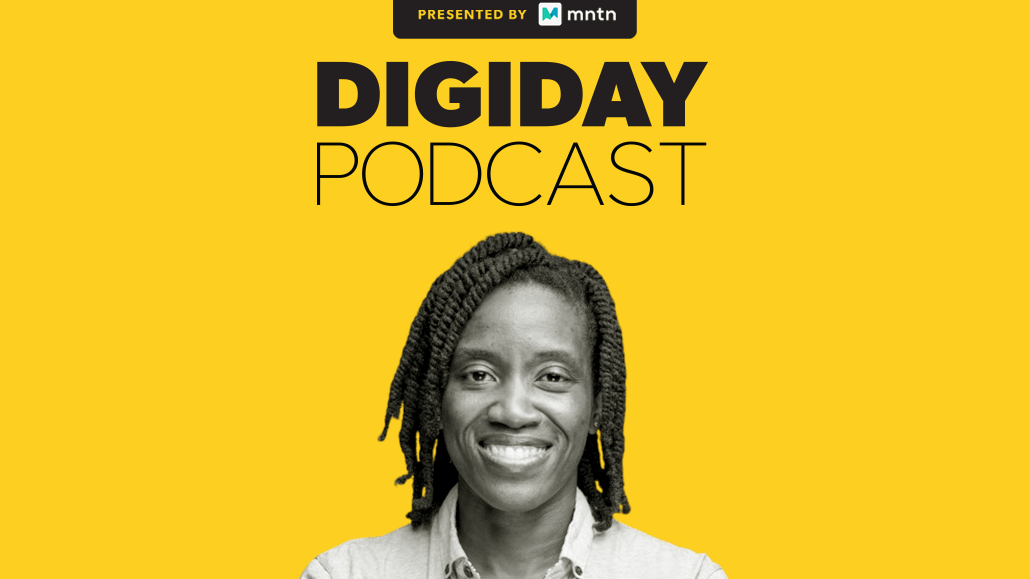LinkedIn’s Imani Dunbar is helping to build more equitable workplaces across industries

Subscribe: Apple Podcasts | Stitcher | Google Play | Spotify
The compensation gap is closing, albeit slowly and unevenly. In the effort to create balanced workplaces, LinkedIn occupies the position of potential catalyst. The Microsoft-owned business-centric social network not only provides a platform with tools through which hiring practices can be made more meritocratic but also offers an example of an equitable organization. It even has an executive charged with overseeing equity strategy.
“I don’t know that any companies have started to unify all their efforts around … a single role and actually set up a team that’s meant to focus on this,” said LinkedIn’s head of equity strategy Imani Dunbar in the latest episode of the Digiday Podcast.
LinkedIn’s focus on equity spans inside and outside its own walls. Internally, LinkedIn has achieved a notable level of compensatory fairness among its employees. Employees of color in the U.S. earn $1 for every $1 earned by white employees, and female employees earn $0.998 for every $1 earned by male employees. But the work is far from finished.
“We’ve been on our equity journey for a while. It’s also our forever work. It’s not something that’s like a six-month or couple-year project,” Dunbar said.
Here are a few highlights from the conversation, which have been edited for length and clarity.
What we talk about when we talk about equity
When we think about equity, what we’re effectively thinking about is the acknowledgment that systemic barriers exist that prevent folks from reaching and maximizing their full potential. And so when we talk about being committed to equity, what we’re effectively trying to drive is ensuring that all members from any demographic can reach their maximum potential.
The inequitable baseline
From a global perspective, it’s generally like 70 to 80 cents on the dollar for women against men. And then when you start to get into some of the racial or ethnic demographics, it just drops from there, as low as, I think, 46 cents on the dollar for Latina women versus white men. So the numbers in terms of where we have to go — not just in the U.S. but likely abroad — there’s plenty of opportunity there.
Combating bias
Some of these biases are unconscious entirely. Whether they’re unconscious or not, the reality is, if you have something that could potentially be a detractor from focusing on what’s ultimately important — which is the skills, the experience, the potential of the candidate — what are some tools that we can put in place to help mitigate some of that?
Making explicit commitments
Oftentimes you haven’t seen companies come out and make overt commitments and put a timeline on it [like LinkedIn’s goal to double the number of Black and Latinx leaders, managers and senior members of its U.S. team over the next five years]. The thing I’m most excited about is we’ve made the commitment. We’re going to hold ourselves accountable. And in five years, hopefully, we’re in a much better place than we are today.
More in Media

Podcast companies turn to live events to capture growing advertiser spend
The surge in the number of live podcast events in 2025 reflects a broader shift: advertisers are betting bigger on podcasts — not just as an audio channel but as a full-fledged creator economy play.

Media Briefing: ‘Cloudflare is locking the door’: Publishers celebrate victory against AI bot crawlers
After years of miserably watching their content get ransacked for free by millions of unidentified AI bot crawlers, publishers were finally thrown a viable lifeline.

How Vogue could navigate potential industry headwinds as Anna Wintour — who agency execs say made ad dollars flow — brings on new edit lead
Anna Wintour’s successor at Vogue will have to overcome the myriad of challenges facing fashion media and the digital publishing ecosystem.








